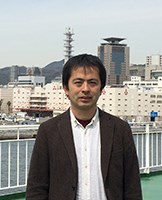
Curriculum Vitae
Dr. Laigui Hu received his PH.D. degree in 2006 at Zhejiang University, China. In 2007, he joined Prof. Awaga's laboratory as a postdoctoral fellow at Nagoya University, Japan. In 2015, he became a faculty at Fudan University, China. Now, he is working on flexible electronics including new types of memories (e.g., ferroelectric, neuromorphic and memristive memories), optoelectronic devices. To date, he has published about 70 peer-reviewed papers and applied for more than 10 patents.
Research Interests
- Flexible electronics;
- Organic electronics;
- Organic ferroelectric devices;
- Organic memories;
- 2D materials and devices
Welcome to join us for master's (the applicants who has passed HSK 5 are preferred) and doctoral degrees.
Awards
1. Shanghai Pujiang Program (2016))
2. Zhejiang Qianjiang Talent Project (2011)
Teaching
Flexible electronic devices
Energy Efficient Embedded Electronics
Guide for electroinc systems
Publications
Selected publications:
1. In-situ artificial retina with all-in-one reconfigurable photomemristor networks, npj Flexible Electronics, 2023, 7, 29. https://rdcu.be/dguvC (Corresponding author)
2. Flexible Memory Arrays of Oriented Molecular Ferroelectric Single Crystals with Nearly Saturated Polarization, Small, 2022. (Corresponding author)
3. Molecular ferroelectric/semiconductor interfacial memristors for artificial synapses, npj Flexible Electronics, 2022, 6, 16. (Corresponding author)
4. Single-Crystalline Thin-Film Memory Arrays of Molecular Ferroelectrics with Ultralow Operation Voltages, ACS Materials Letters 2022, 4(4), 758-763. (Corresponding author)
5. Dewetting-assisted Patterning of Organic Semiconductors for Micro-OLED Arrays with a Pixel Size of 1 μm, Small Methods, 2022, 2101509. (Corresponding author)
6. Highly efficient 1D/3D ferroelectric perovskite solar cell, Advanced Functional Materials, 2021, 31, 2100215. (Co-1st author)
7. Wafer-Scale Diisopropylammonium Bromide Films for Low-Power Lateral Organic Ferroelectric Capacitors, Advanced Electronic Materials, 2021, 7, 2000778. (Corresponding author)
8. Self-assembled non-volatile micro memory arrays of molecular ferroelectrics, Journal of Materials Chemistry C, 2020, 8:16742-16748. (Back cover, Corresponding author)
9. Direct laser writing of vertical junctions in graphene oxide films for broad spectral position-sensitive detectors, Nanophotonics, 2018, 7(9): 1563-1570 . (Corresponding author)
10. Space-Charge-Stabilized Ferroelectric Polarization in Self-Oriented Croconic Acid Films, Advanced Functional Materials, 2018, 28:1705463. (1st & corresponding author)
11. Organic semiconductor/water interfaces for photoelectrical viscosity sensing, Electrochemistry Communications, 2018, 95:18-22. (Corresponding author)
12. Organic optoelectronic interfaces with anomalous transient photocurrent, Journal of Material Chemistry C 2015, 3:22-5135. (Review paper) (1st & corresponding author)
13. Storage of an electric field for photocurrent generation in ferroelectric-functionalized organic devices. Nature Communications, 2014, 5:3279. (1st & corresponding author)
14. Effect of photoinduced charge displacement on organic optoelectronic conversion,Physical Review B,2011, 84(20):205329. (1st & corresponding author)
15. Optoelectronic Conversion by Polarization Current, Triggered bySpace Charges at Organic-based Interfaces, Applied Physics Letters, 2010, 96:243303. (1st & corresponding author)
16. Structuralchanges in soot particles induced by diode laser irradiation, Carbon, 2006, 44, 1725. (1st author)
Copyrights 2017 © The School of Information Science and Technology, Fudan University


 Micro-Nano System Center
Micro-Nano System Center Professional Title:Associate Professor
Professional Title:Associate Professor Position:
Position: Email:laiguihu@fudan.edu.cn
Email:laiguihu@fudan.edu.cn Visiting Address:
Visiting Address: Tel:
Tel: Home Page:
Home Page: